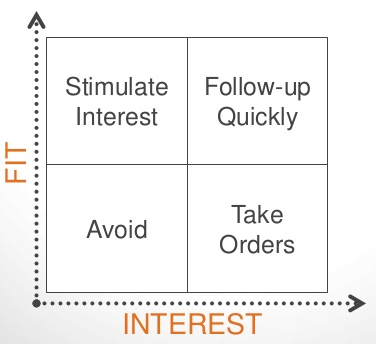Are you tired of the childish bickering and finger-pointing between Sales and Marketing? Here’s how to make peace between the two and boost revenues.
Key Takeaways:
- Alignment Boosts Revenue: Companies with strong sales and marketing alignment see a 20% annual revenue growth, according to the Aberdeen Group.
- Shared Goals: Sales and marketing must align on revenue goals, lead definitions, and ownership of different stages in the sales funnel.
- Closed-Loop Reporting: Implementing marketing automation and CRM software fosters better communication and transparency between teams.
- Service Level Agreement (SLA): A written SLA sets expectations and accountability for both marketing (quality leads) and sales (follow-up efforts).
- Data-Driven Collaboration: Regular access to dashboards and transparent data minimizes conflicts and keeps the focus on shared outcomes.
Understanding Smarketing
In the popular book, “Men Are from Mars, Women Are from Venus” the Author John Gray explains that men and women have fundamentally different psychological differences exemplified by the book’s title: that men and women are from distinct planets.
In many B2B companies, similar divisions can exist between Sales and Marketing. For instance, sales people will complain about poor quality leads generated by marketing. Conversely, the marketing people will complain about Sales’ weak follow up, if at all, of the leads.
Sales sometimes thinks of Marketing as irrelevant party planners. While Marketing can view Sales as lazy and incompetent.
Either way you look at it, it is not good for the bottom line.
Here’s why: In a 2010 study by the Aberdeen Group, companies with strong sales and marketing alignment achieved 20% annual revenue growth.
So how can you get Sales and Marketing on the same sheet of music? It all comes down to goals. Once you have an agreement on goals, the marketing pipeline and sales quota become two ends of the same stick.
Here are the 5 steps to achieving “Smarketing,” where Sales and Marketing lay down arms, join forces and achieve greater revenue growth (and become co-recipients of the Nobel Peace Prize For Sales and Marketing Alignment):
1. Talk About Money
Sales and marketing need to talk about revenue, specifically. For marketing to do this, some math will be required, working backwards from sales:
- What is your company or division’s revenue goal?
- What is your average deal size (current revenue/current customers)?
- How many customers do you need? (revenue goal/average deal size)?
- What is your lead to conversion rate (current customers/current leads)?
- Calculate the number of leads needed (customers needed/average lead to customer)
With these questions answered, marketing is already much closer to having a goal that is tied to sales. But wait, there’s more.
Marketing and Sales need to agree on the characteristics of a sales ready lead. It will boil down to a combination of “fit” and “interest.”

If there is a fit but low interest, Marketing needs to nurture the lead. If there is a fit and interest, Sales needs to follow up quickly.
Unfortunately, only 45% of businesses have established a company-wide definition of a sales-ready lead, according to a study by MarketingSherpa.
This is also a crucial time to form a clearer understanding of and agreement on your ideal customer or buyer persona.
Once sales and marketing have zeroed in on defining a sales ready lead, the hand off can improve dramatically.
Then, Marketing needs to define the different stages of the funnel (website visit, lead, marketing qualified lead, sales qualified lead, opportunity, sale).
Finally, Marketing and Sales must agree, definitively, on who owns which part of the sales funnel. Also, make sure both sides understand that the buyer’s journey is not linear, but increasingly erratic.

2. Close The Loop
Closed-loop reporting, that is. If Marketing is throwing leads to Sales and doesn’t find out what happens to the leads, stop the madness. The system is broken.
Two critical tools are needed to make this happen:
- Marketing automation software (e.g. HubSpot, Marketo)
- CRM (customer relationship management) software (e.g. Salesforce, Nimble)
By reporting in a closed loop, marketing is able to send more information to sales (such as additional lead intelligence), and sales is able to provide feedback and sales activity reports to marketing.
Some of the things that marketing should be looking at via closed loop reporting include customers by marketing source and conversion assists.
3. Get An SLA
Sort of like a marriage license, Sales and Marketing need to have a signed service level agreement (SLA). An SLA is a written definition of what marketing and sales agree to do for each other.
For instance, marketing would agree to provide a specific number of quality leads within a given time in order for sales to reach their quota. Conversely, sales will agree to a certain speed and depth of lead follow up that makes business sense.
4. Talk to Each Other
Marketing and sales need to have weekly meetings. At these meetings marketing should update sales on campaign activity and plans and product updates. If marketing and sales sit together at work, it boosts communication dramatically. Give it a try, you’ll be surprised how much it helps.
5. More Data, Less Drama
This goes back to Marketing and Sales bickering and finger pointing (“marketing’s leads suck” and “sales isn’t following up on the leads”).
Instead, use data that is frequent, public and transparent. Marketing needs to have an always-on dashboard with website traffic and leads. It needs to be reviewed every day.
Additionally, the leads should be tracked by source and by campaign. The number of marketing qualified leads should be tracked on the dashboard, too. Similarly, with closed loop reporting, all the sales activity should be visible and analyzed.
The Importance of Buyer Personas in Smarketing
Buyer personas are fictional representations of your ideal customers, based on data and insights. They act as a shared blueprint for sales and marketing teams, fostering alignment by focusing on the same target audience and understanding their motivations.
Here’s why they’re crucial:
- Unified Understanding: Buyer personas provide both teams with clarity about customer demographics, preferences, pain points, and decision-making processes. This shared knowledge ensures campaigns and outreach strategies resonate with the intended audience.
- Personalized Engagement: With detailed personas, marketing can craft tailored campaigns, and sales can deliver more personalized pitches, increasing conversion rates and customer satisfaction.
- Efficient Resource Allocation: By targeting personas, resources are concentrated on high-potential leads, reducing wasted effort on uninterested or irrelevant prospects.
- Improved Messaging: Consistent messaging across all touchpoints reinforces brand trust and ensures that leads move smoothly through the funnel.
Tools for Seamless Sales and Marketing Collaboration
Effective alignment requires the right tools to facilitate communication, streamline processes, and provide actionable insights. Here are some of the most popular tools to enhance sales and marketing collaboration:
- CRM Software (e.g., Salesforce, HubSpot CRM): Tracks customer interactions, provides lead intelligence, and ensures sales teams have the context they need to follow up effectively.
- Marketing Automation Platforms (e.g., Marketo, Mailchimp): Automates lead nurturing, email campaigns, and analytics, enabling marketing teams to generate and track high-quality leads.
- Collaboration Tools (e.g., Slack, Microsoft Teams): Fosters real-time communication between sales and marketing, reducing silos and increasing productivity.
- Closed-Loop Reporting Systems: Integrates CRM and marketing automation to track leads from initial contact to conversion, offering transparency and accountability.
- Analytics and Dashboard Tools (e.g., Tableau, Google Data Studio): Provides shared access to data insights and performance metrics, enabling both teams to make informed decisions.
Common Pitfalls in Sales and Marketing Alignment
Despite the benefits of aligning sales and marketing, many organizations face challenges that can derail collaboration efforts.
Here are the most common pitfalls and how to avoid them:
Undefined Lead Qualifications
Problem: Without a clear definition of what constitutes a sales-ready lead, marketing may generate unqualified leads, and sales may neglect valuable ones.
Solution: Establish a shared lead scoring system and define “sales-ready” criteria collaboratively.
Lack of Communication
Problem: Sales and marketing teams often operate in silos, leading to misalignment on goals, strategies, and expectations.
Solution: Schedule regular meetings and utilize collaboration tools to ensure ongoing dialogue and shared updates.
Misaligned Goals
Problem: Marketing focuses on generating leads, while sales focuses on closing deals, leading to competing priorities.
Solution: Set joint goals tied to revenue targets, emphasizing mutual accountability.
Poor Data Sharing
Problem: Without closed-loop reporting, marketing has no visibility into lead outcomes, and sales lacks insight into lead behavior.
Solution: Integrate marketing automation and CRM tools to enable real-time data sharing.
Resistance to Change
Problem: Teams may resist adopting new tools or processes due to entrenched habits or fear of accountability.
Solution: Provide training, emphasize benefits, and involve both teams in decision-making to foster buy-in.
Conclusion
Sales and marketing alignment isn’t just a strategy; it’s a necessity in today’s competitive marketplace.
By establishing shared goals, defining responsibilities, and leveraging data-driven tools, businesses can transform potential conflicts into collaborative successes.
The result? Stronger teams, happier customers, and greater revenue growth.
Your turn: What challenges do you have getting sales and marketing aligned?
Matix and funnel graphics courtesy of HubSpot


